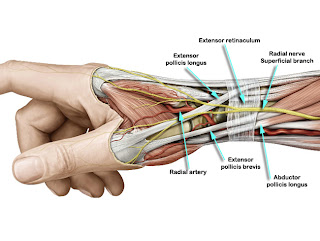Entrapment of medial calcaneal nerve (MCN)

Peripheral nerve entrapment is a rare, but important, cause of foot and ankle pain that often is underdiagnosed and mistreated. A peripheral nerve may become entrapped anywhere along its course, but certain anatomic locations are characteristic (2). The medial calcaneal nerve (MCN) The Tibial nerve is called the planter nerve in the sole. The tibial nerve passes to the sole of the foot takes a turn on the medial side of the calcaneum is called MCN. The medial calcaneal nerve arises from tibial nerve of the inner side of the ankle, perforates the laciniate ligament, travels downwards passing below the bony projection on the inner side of the ankle, and supplies the skin over the medial aspect of the heel. Hence it is the most important nerve for heel sensations. MCN have 2 branches. The anterior branch dominate the cutaneous sensation of the anterior part of the medial calcaneal and heel weight loading field, while the posterior branch dominate the sensation of the posterior an...

